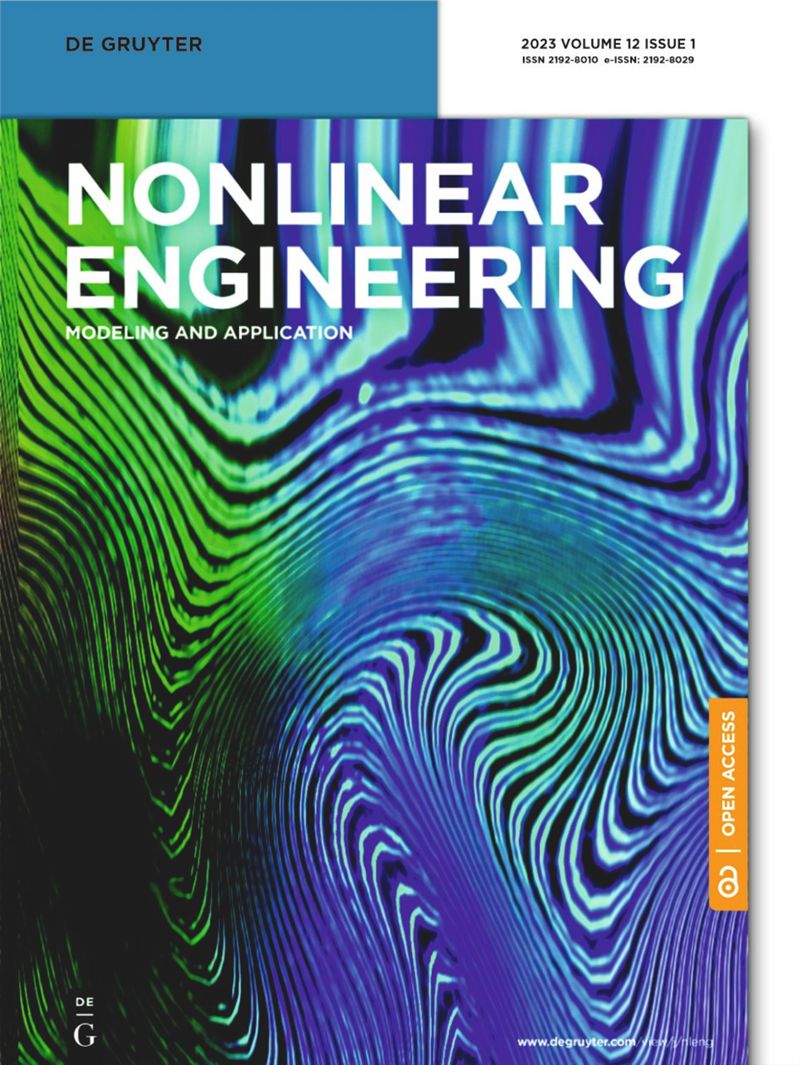双斜齿轮非线性动载荷传动误差多目标优化模型
IF 2.4
Q2 ENGINEERING, MECHANICAL
引用次数: 0
摘要
摘要为解决体积减小导致传动稳定性和可靠性降低对齿轮传动质量的影响,提出了双斜齿轮非线性动载传动误差的多目标优化模型。本研究旨在引入一种齿轮传动的多目标设计方法,以螺旋齿轮的体积和光滑可靠性为目标函数,建立螺旋圆柱齿轮传动的多目标优化设计数学模型。为了解决这一多目标优化问题,我们利用科学计算软件MATLAB中的优化工具箱并举例说明。结果表明,在对体积和契合度进行联合优化设计后,计算得出,结合优化设计后的体积仍为2.2624 × 10 7 mm 3,契合度为5.9908。舍入后的设计结果为m n =3,Z 1=31, β =20°,Ψ d =1.2 {m_}=3{{\rm{n}}},{Z_1}=31{, }\beta ={20}^ {\circ, }{\Psi _}=1.2。优化设计结果表明,以最小体积和最大重合为目标函数的联合优化设计可以减小齿轮体积,提高齿轮输出稳定性。{{\rm{d}}}本文章由计算机程序翻译,如有差异,请以英文原文为准。
Multi-objective optimization model of transmission error of nonlinear dynamic load of double helical gears
Abstract In order to address the impact of reduced transmission stability and reliability caused by volume reduction on the quality of gear transmission, this article proposes a multi-objective optimization model for nonlinear dynamic load transmission errors of double helical gears. This study aims to introduce a multi-objective design method for gear transmission, using the volume and smooth reliability of helical gears as objective functions, and establish a multi-objective optimization design mathematical model for helical cylindrical gear transmission. In order to solve this multi-objective optimization problem, we utilized the optimization toolbox in the scientific calculation software MATLAB with examples. The results show that after the joint optimization design of volume and coincidence degree, it is calculated that the volume after the joint optimization design is still 2.2624 × 10 7 mm 3 , and the coincidence degree is 5.9908. After rounding, the design result is m n = 3 , Z 1 = 31 , β = 20 ∘ , Ψ d = 1.2 {m}_{{\rm{n}}}=3,{Z}_{1}=31,\beta ={20}^{\circ },{\Psi }_{{\rm{d}}}=1.2 . The optimization design results show that the joint optimization design with the minimum volume and the maximum coincidence as the objective function can reduce the volume and improve the output stability of the helical gear.
求助全文
通过发布文献求助,成功后即可免费获取论文全文。
去求助
来源期刊
CiteScore
6.20
自引率
3.60%
发文量
49
审稿时长
44 weeks
期刊介绍:
The Journal of Nonlinear Engineering aims to be a platform for sharing original research results in theoretical, experimental, practical, and applied nonlinear phenomena within engineering. It serves as a forum to exchange ideas and applications of nonlinear problems across various engineering disciplines. Articles are considered for publication if they explore nonlinearities in engineering systems, offering realistic mathematical modeling, utilizing nonlinearity for new designs, stabilizing systems, understanding system behavior through nonlinearity, optimizing systems based on nonlinear interactions, and developing algorithms to harness and leverage nonlinear elements.

 求助内容:
求助内容: 应助结果提醒方式:
应助结果提醒方式:


